Japan travel planning, expenses, when, where, books, essays, my payment policy
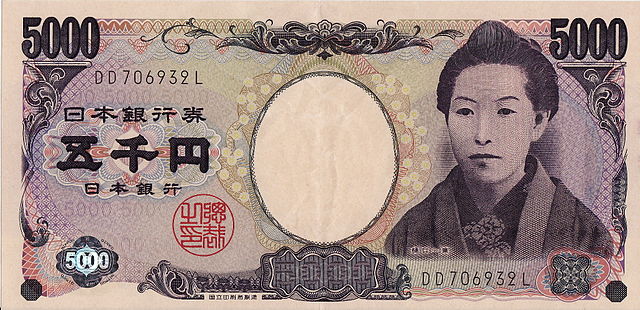
To have the very best Japan trip or vacation possible, it helps to plan ahead and familiarize yourself with the logistics and travel possibilities of moving around in Japan.
The top 3 things to remember and consider before arriving in Japan are: 1. Be sure to check out the Pocket Wifi option provided by Japan Wireless (japan-wireless dot com; no affiliation); not to make phone calls but to access Google Map pins, and use Whatsapp and email on the go; these devices can be shared by a small group and are very inexpensive; and can be delivered to your arrival hotel. 2. If you are going to be mostly in the cities or on the edges of big cities and using public transportation, then an ICOCA transit pass is a must; they can be recharged; easy to buy on arrival (but I can also get them for you and send them to your arrival hotel). 3. Do not worry too much about getting reserved shinkansen bullet train tickets; the fast Nozomi trains leave Tokyo every 15 minutes or so; but in super-peak season (March 20-May 07; October 20-Dec 01) making special arrangements to get tickets in advance is well advised between Tokyo and Kyoto (I can help with that); otherwise you can easily get your reserved bullet train tickets on arrival, in English more and more, at all major JR train stations; and you can book them for multiple legs in one session. Note: Japan Rail Passes are only advantageous for major cross country touring on the bullet train (and fast inter-regional specialty trains). The official website for getting these passes (also online in advance) is: https://japanrailpass.net/en/ (no affiliation).
Getting cash in Japan via the easy-to-use international ATMs in 7/11 convenience stores (and at the Post Office!) is super easy and convenient. Just do a nearby search for "seven eleven" in Google Maps. You can withdraw US$800/day/bank card with your PIN number. Easy and safe!
For excellent Japan trip planning information in English, I highly recommend https://www.japan-guide.com/. This amazing website covers every single area of Japan with simple, well-written text and superb graphics. And they update their content so that it is always fresh. And it's all in perfect English! [Disclaimer: Your Japan Private Tours is an advertiser on Japan Guide.]
The following websites are excellent for the main hubs of Tokyo, Kyoto, Osaka, and Fukuoka. 1. For Tokyo, Metropolis is the best. This excellent website (and print magazine) is both for foreign residents living in Tokyo and for travelers. They have a really deep content database. Tokyo Timeout and Matcha are also quite good. 2. Since the demise of the Kyoto Visitor's Guide during Covid, the best place to look for Kyoto ideas and insights is Matcha magazine. 3. For Osaka, Osaka Info is pretty comprehensive for the basics. 4. For Fukuoka, visit Fukuoka Now. This site is also owned and operated by a foreign led team, and they do good work!
Recent Japan travel news highlights: 1. The Japan Rail Pass will go up in price by 66% from October 2023; you can buy rail passes online now. 2. The Japanese government is aggressively promotiing the edges of Japan, so going to the remote countryside is getting easier by the season. 3. The Japanese are also agressively courting wealthy travelers and gamblers via luxury hotels and casinos. In 2019, Japan peaked at 31 million foreign visitors. In ten years, the government is aiming for 60 million foreign visitors! Learn more!
To really plan a trip well try not to do too much and be aware how much time is consumed by A to B travel. Combining areas that are rich in things to see and do is always a better idea than going from most popular location to most popular location whether temples, shrines or anything else.
And please remember that Japan is an information-overload experience for most foreign travelers. And this is especially true for North Americans, Europeans and travelers from Australia and New Zealand. You don't notice it at first but after a few days you can be mildly or moderately overwhelmed. For this reason it is smart to plan for breaks during the tour (cafes for people watching), siestas at the hotel on days where you really need to take a break (especially true in Japan hot and humid summer months), and to try to do enough during a day instead of way too much. Learn more!
YJPT is a private tour operator and in this industry expenses are never included. I can give you exact expense details (subway, bus, entry, lunch, taxi, etc.) if you request that level of clarity for your planning process PS: I don't like Excel but I know how to extract information from it for my MS Word | PDF itinerary outlines.
Learn more! Or email me today at yourjapanprivatetours AT gmail DOT com. Or text me on Whatsapp @ +1-415-230-0579.
- Japan travel expenses: hotels, food, transpo
- Japan month-by-month deep travel essays: nature, food, festivals
- Japan's 5 islands in depth: transportation, accommodation, destinations, local foods, history
- Books & films & videos to experience before you go!
- Deep essays about Shinto, Buddhism, history, culture
- YJPT's prices & payment policy
- YJPT's cancellation policy
Japan travel expenses: accommodation, food, transportation
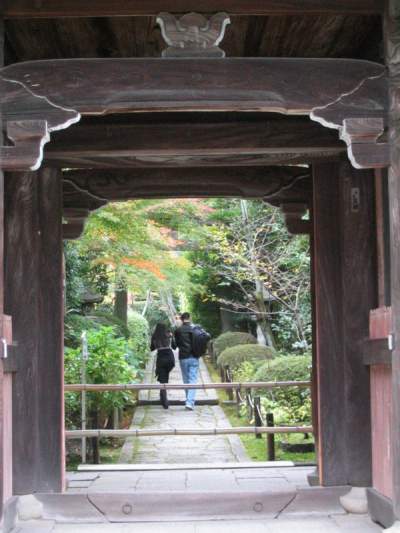
Accommodation booking in Japan has become much easier with Booking.com (and Expedia). In cities you can expect to pay Yen 16,000-Yen 22,000/night/room for 3-4 star accommodation. But you can spend about Yen 9,000/night/room in "obscure" 2-star hotels; just do a "nearby search" in Google Maps for your location with "hotels" and zoom in on the red pins (labeled) and little red dots (unlabeled) that are two-star hotels ("business hotels" are also a good search option). In the countryside, hotels go down to about Yen 12,000/night/room and local ryokan inns are about the same (including breakfast and dinner in most instances)
However, there are times when the client requires special accommodation assistance or just can't book on their own due to peak season issues or because they are going way off the beaten track. Off the beaten track, where minshuku bed and breakfasts and small local ryokan inns (and temple) lodging are dominant, clients frequently ask me to make the booking by telephone (for which I charge Yen 7,000/reservation block/family).
The other issue is super peak season in the Kyoto-Osaka zone: namely mid-March to early May and mid-October to early December. During these periods it can be almost impossible to find a room in Kyoto but I can with multiple phone calls.
Lunch is usually a fast, authentic inexpensive experience ranging from Yen 800-Yen 1,500/person. This usually means healthy noodle dishes or domburi rice bowls and the like. Reserved lunches during day tours are fairly rare but some clients request this, and I can arrange such lunches (in garden settings, on terraces, and in unique old places). Please inquire. Again, I only charge Yen 7,000/group/booking which includes the reservation and preferred seating type (counter, private room, etc.) and the round trip logistic instructions (bilingual) to and from the restaurant. For more information, please inquire.
Transportation is an additional expense and not included in any of my guided or self-guided tours.
Transportation can be very inexpensive (public + walking OR taxis for short distances), or it can be expensive (car and driver; or luxury car and driver; or bus and driver). It all depends on the choices you make and the way you like to travel. And please note: In cities like Tokyo and Kyoto a car & driver or a taxi is often not the fastest option (think rush hour, grid lock, super peak season). Below are the general costs from low to high . . . The choices are all yours!
The least expensive way to move around Japan is to take full advantage of the country's exceptional public transportation system. This includes subway, train, tram, and sometimes a bus (usually in countryside destinations). Inner city subway fares in Tokyo range from Yen 160/adult to about Yen 250/adult. my self-guided tours take full advantage of this system. I provide amazingly accurate logistics for any form of public transportation in Japan. Zip across Tokyo in minutes or get from JR Kyoto Station to Kyoto hot spots in super peak season (when the city has 350,000 domestic Japanese visitors every day!).
A more expensive transportation option, and one that I make full use of during both guided and self-guided tours, are taxis. Usually, I use taxis strategically to skip quickly ahead to the next stop on your tour. In major cities like Tokyo and Kyoto you will find thousands of taxis and they are waiting in front of all the key tourist and business destinations. The smart way to use a taxi in Japan is to travel less than 2 kilometers from A to B. Almost without exception, a 2-km ride will only cost you Yen 700 and that is worth it if traffic is moving at normal speeds. FYI: Note: 80% of the taxis in Japan can only seat 4 passengers. There are "big taxis" that can seat 5 but they usually have to be called in. On my tours I include and recommend taxis where ever it saves time and does not cost too much.
For the elderly, travelers who can't walk too much, or clients with bigger budgets, vehicles and drivers can be hired by the hour. The generally hourly fee for a 4-passenger sedan or 9-seater van & driver is usually about Yen 9,000/hour. In the countryside, i.e., beyond the big cities, the rate can be little higher and even higher if you are crossing prefectural (state) borders. For luxury level travelers I hire luxury cars and they are also available by the hour (usually with a 3-hour minimum). Everything from Mercedes and Lexus to BMW and Audi . . . The choices are all yours!
- Japan travel expenses: hotels, food, transpo
- Japan month-by-month deep travel essays: nature, food, festivals
- Japan's 5 islands in depth: transportation, accommodation, destinations, local foods, history
- Books & films & videos to experience before you go!
- Deep essays about Shinto, Buddhism, history, culture
- YJPT's prices & payment policy
- YJPT's cancellation policy
Japan month-by-month deep travel essays: nature, food, festival
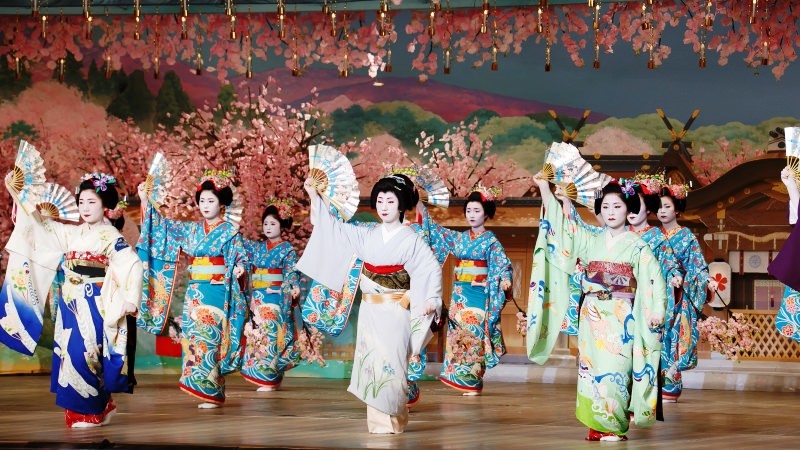
Most travel planning is based on timing and Japan, a country with four distinct seasons, is different every month of the year. Spring is chilly and then warm. Summer is wet first (June rainy season) and then very hot and humid at sea level west of Tokyo. Autumn is the rice harvest and the cool views of momiji maple leaves and charcoal cuisine. Winter is for watching the drift ice or skiing in Hokkaido (which you can also do at Hakuba, Nagano in the Japanese Alps). Below you will find a link for every month of the year to better plan your next self-guided tour of Japan or a trip that combines a few guided days with lots of Japan self-guided tours and travel services. Learn more!
Spring: Sights, nature, in-season cuisine, destinations
Spring in Japan is champagne weather: sunny, warm and a natural world exploding into new greens and colors of all kinds! And lots of festivals and major exhibitions! Late March is now the start of cherry blossom viewing (think climate change), which has been recorded since the Heian period, 794-1185 AD. Kyoto's super peak spring season is March 20-April 25 (more or less). If Kyoto is on your spring travel list then plan ahead for accommodation and crowd-avoiding days (I can help make it serene! Learn more!).
Summer: Sights, nature, in-season cuisine, destinations
Summer is very hot and humid in Kyoto and Tokyo, but you can escape the heat by starting your days at dawn (literally) and taking a 2-3-hour siesta from say 13:00-16:00. Heat exhausts and frays the nerves so care is necessary for children and adults alike: hats, sun glasses and a bit of cream. But you must carry a light sweater or jacket when you enter the "deep freeze" of air conditioning nearly everywhere you go at sea level.
Summer in Japan is best in the Japanese Alps, the Gifu birch forests (inland and uphill from Nagoya), and of course Hokkaido and certain out-of-the-way Pacific and Sea of Japan coastal beach paradises (the Tango, Izu, Boso, Noto peninsulas).
Autumn: Sights, nature, in-season cuisine, destinations
Autumn, like spring, is a busy season in Japan. Remember, Kyoto gets 50 million Japanese visitors a year and from mid-October to late-November nearly 12 million will visit Kyoto for momiji maple leaf viewing, but also because Japanese culture and poetry sees autumn as the beginning of the end, and spring as the beginning of the beginning. Lots of festivals in autumn too! And don't forget to plan ahead for sleeping in Kyoto from about Oct 20 to the end of November. [Super peak season also requires planning for where to go when, to avoid the crowds. And YJPT can help you plan around the chaos no problem. Learn more!]
Winter: Sights, nature, in-season cuisine, destinations
For North Americans and Europeans, who have their own distinct winter paradises, Japan is not a big destination in Dec, Jan and Feb. But for Australians and southeast Asians being in the snowy worlds of Japan is a delightful and exotic experience.
Japanese winters are mostly mild at sea level, but snowboarding and skiing perfections are just a train ride (Hakuba in the Japan Alps) or a flight away (Sapporo | Hokkaido).
And the crowds of Japanese tourists are all gone no matter where you go (except the major ski resorts near Tokyo on weekends). You feel like you have Kyoto to yourself in winter and that is precious for many. Prices don't go down much in off season, but having the place to yourself makes it a special Japan travel season, which can also include world-class winter sports.
Learn more! Or email me today at yourjapanprivatetours AT gmail DOT com; or text me on Whatsapp @ +1-415-230-0579.
Japan's 5 islands in depth: transportation, accommodation, destinations, local foods, history
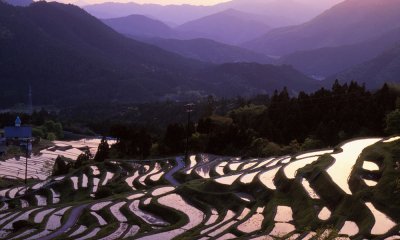
Japan is a very big and long country made up of five separate main islands. From north to south: Hokkaido (snow sports, seafood, nature), Honshu (1,300 km long, 50-230 km wide; and bigger than the island of Great Britain!), Shikoku (Buddhist pilgrimage, beaches, nature, cuisine), Kyushu (Southeast Asian arrival paradise from food to nature and hot springs), and the tropical islands of Okinawa (scuba diving, jungle, hidden beach worlds).
Honshu Island: Much more than the Golden Route: Honshu is huge! Beyond Tokyo and Kyoto lie the island's 1,300 km (810 mile) northern coastline, Noto and Tango peninsulas' timeless villages, Tottori's sand dunes, and the endless hidden wonders of Izu, Mie, and the Inland Sea.
Hokkaido Island: A still wild natural world known for food and winter sports: Hokkaido is all about national parks, hot springs, flower parks, the Ainu, scuba diving, and some of the best seafood in Japan, but it's huge so time is required!
Kyushu Island, Japan's ancient origins with direct connections to southeast Asia: International flights arriving at Fukuoka International are a great way to have a perfect vacation | holiday | adventure | romantic story featuring hot springs, mountain villages, ceramics, bamboo baskets, and coastal wonders.
Shikoku Island: More history and old Japan than you know: Just south of Osaka | Kobe | Hiroshima, Shikoku is special for spiritual travel (the amazing 88 Buddhist temple pilgrimage), old and contemporary culture, stunning natural settings, and incredible local foods!
The Okinawa Islands: An ocean paradise with great music and cuisine: Okinawa is well known for world-class beaches, scuba diving and snorkeling, exotic food, and a unique music and martial arts culture. And it's a great place to start or end a Japan private tour.
Books & films & videos to experience before you go!

There are many excellent books on Japan but the ones I recommend most highly are as follows: 1. The Inland Sea (Donald Ritchie) for a timeless travelog through the islands of Inland Sea by one of Japan's greatest foreign writers. 2. The Roads to Sata (Alan Booth) is one of the funniest and most insightful looks at all of Japan by a man who lived in Japan for many years (and died there). This book is about his incredible walk from the northern tip of Japan to its southern tip. 3. The Hare With Amber Eyes (Edmund de Waal) is set in Paris, Vienna and Tokyo and is a fascinating tale of netsuke and the rise of Japanese art consciousness in 19th century Europe. Superb! 4. The Sea of Fertility trilogy by Yukio Mishima. 5. Anything by Junichiro Tanizaki (especially The Makioka Sisters and In Praise of Shadows). 5. The Woman in the Dunes (film and book) written by Abe Kobo.
There are also a number of must see movies about Japan that are well worth seeing before you go! 1. Lost in Translation (Sophia Coppola). 2. Black Rain (Ridley Scott). 3. Anything and everything by Akira Kurosawa (Kagemusha and Seven Samurai and Madadayo) and Juzo Itami (Tampopo and A Taxing Woman). 4. Last Samurai (with Tom Cruise). 5. The original Japanese version of Shall We Dance directed by Masayuki Suo. 6. Sea of Trees (Gus Van Sant; Matthew McConaughey; 2015).
You will also find useful information on my social media pages (see footer of this page), and I always appreciate people who share and follow my content, which in most seasons is posted once a week in both long-read and short-read formats with great images.
- Japan travel expenses: hotels, food, transpo
- Japan month-by-month deep travel essays: nature, food, festivals
- Japan's 5 islands in depth: transportation, accommodation, destinations, local foods, history
- Books & films & videos to experience before you go!
- Deep essays about Shinto, Buddhism, history, culture
- YJPT's prices & payment policy
- YJPT's cancellation policy
My essays on Japanese history, religion & culture
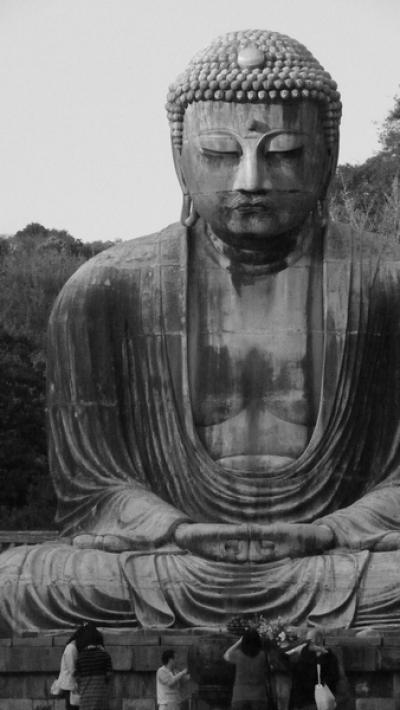
The French refer to Japan as "Planet Japon!" And Planet Japon is not an easy destination if you don't speak Japanese. Therefore, the more you know the better. Try to start planning and learning more about Japan long before getting on the airplane. For visas and flights and hotels, the internet will solve all your problems. But there are things worth reading up on and learning about. Japan's history, for example. Japan was first culture worldwide for firing ceramics and a Japanese woman wrote the narrative novel. Japanese culture comes in various flavors and most people are looking for old and new. Families with kids are looking for the contemporary charms of Japan like manga, anime, cosplay, and video games and characters. And then there are the unique and interesting ways the Japanese interpret Western ideas, ranging from delicious desserts and amazing theme parks to art, design and relaxation.
I have posted a growing list of essays on Japanese society and culture on this website. To see them all go to my old-new Japanese culture essays index. As a writer, I'm always tring to post useful and interesting content for foreign travelers coming to Japan. And there are so many different kinds of travelers with so many unique interests. Learn more!
My latest essays on Japanese culture include:
For the full and growing list please go to my website essay index. Private travel arrangements designed by Your Japan Private Tours Ltd are always approved, step-by-step, by the client (family, small group or corporation). This means that you, the client, will only receive an invoice for payment when the FINAL OK has been given by you, the client.
Once you have Final OKed the itinerary design--including all the services you chose for your Japan trip (guided tours, self-guided tours, Digital A to B transfers, restaurant reservations, and other client-specific services)--an invoice will be issued for payment. The client is requested to pay 50% of the invoice total IF they have booked any guided tours. If the client has only chosen self-guided tours (i.e., guided tours), the client is requested to pay 100% of the charges in advance.
I accept all major credit cards (processed by Stripe). I also accept payment via Wise (formerly TransferWise). International bank wire transfers are also possible, but less convenient. YJPT's full service JPY pricelist (100% retail prices, no hidden or added charges) for tours, transfers, restaurant experiences and more! If you decide to cancel a Your Japan Private Tour's guided or self-guided tour or travel service before arriving in Japan or after arriving in Japan, please note my cancellation charges are as follows: 1. 21-11 days prior to the date of the agreed-upon Japan travel services: 30% of the total charges. 2. 10-6 days prior to the date of the agreed-upon Japan travel services: 60% of the total charges. 3. 5-0 days prior to the date of the agreed-upon Japan travel services: 100% of the total charges. Cancellation policy notes: The date of cancellation and thus the cancellation charges are based on the date and time when the cancellation notice is received in Japan time, NOT the local date and time when the cancellation request was sent by the client. Learn more! Email me today at yourjapanprivatetours AT gmail DOT com. Or text me on Whatsapp @ +1-415-230-0579. Save time & have a better time in Japan: expert tailormade Japan private tours & travel services, anywhere in Japan since 1990, at retail prices! Learn more! WhatsApp: +1-415-230-0579. Or email me today!
Your Japan Private Tours' payment policy
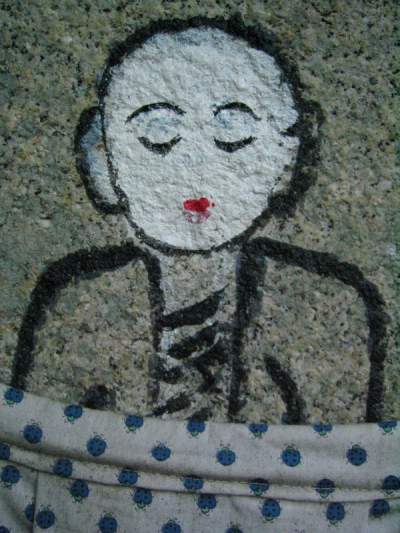
Your Japan Private Tours' cancellation policy